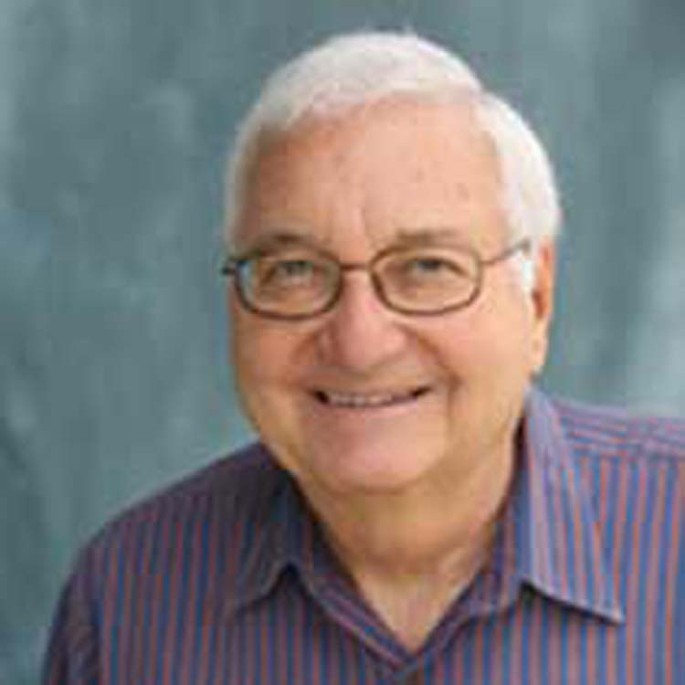
- Select a language for the TTS:
- UK English Female
- UK English Male
- US English Female
- US English Male
- Australian Female
- Australian Male
- Language selected: (auto detect) - EN
Play all audios:
On May 30, 2019, the field of neuropsychopharmacology lost Professor Larry Stein, Professor Emeritus of Pharmacology, University of California, Irvine, College of Medicine, and American
College of Neuropsychopharmacology (ACNP) Fellow Emeritus. Dr. Stein was accepted for ACNP membership in 1963. His research career spanned over five decades. His pioneering research places
him among the most prominent and seminal researchers at the origins of our field of neuropsychopharmacology. He was a brilliant pharmacologist, dynamic leader and mentor, and wonderful,
well-loved human being. Indeed, one might argue that he was the driving force in the new scientific pursuit of the intersection of behavior, pharmacology, and neurochemistry, which
ultimately became the field of neuropsychopharmacology as we know it today. His personal qualities of quick insight, genuine care, passion for research, and great sense of humor place him
forever in the hearts of those who knew him. Dr. Stein was born in 1931 in New York. He attended New York University, earning a B.A. in 1952. He subsequently was awarded a Ph.D. under the
mentorship of Dr. Kenneth Spence at the University of Iowa. Dr. Spence was one of the most prominent American psychologists of his time, known for both his theoretical and experimental
contributions to learning theory and motivation. Dr. Spence built on the work of Clark Hull and hypothesized that learning was the result of the interaction between drive and incentive
motivation. Dr. Stein then performed postdoctoral work at the Walter Reed Army Institute of Research with two other very prominent and towering figures in behavioral biology, Dr. Joseph
Brady and Dr. Murray Sidman. This lineage of training provided Dr. Stein with the skills and theoretical framework to make his own very seminal discoveries. In 1957, Dr. Stein served as
Supervisory Research Psychologist, Veterans Administration Research Laboratories in Neuropsychiatry, in Pittsburgh. From 1959 to 1979, he worked at Wyeth Laboratories in Radnor, PA, where he
became Senior Research Scientist and Head of the Department of Psychopharmacology. During this period, he was also a Visiting Lecturer and Adjunct Professor, Department of Psychology, Bryn
Mawr College, in PA and Adjunct Professor, Departments of Psychiatry and Psychology, University of Pennsylvania. In 1979, he moved to Irvine, CA, where he served as Professor and Chair
(1979–2000) of the Department of Pharmacology, College of Medicine, University of California, Irvine, and Adjunct Professor, Department of Psychiatry and Human Behavior, University of
California, Irvine. In 2000, he retired as Chair and took the position of Chief Scientific Officer, Corporate Affairs and Initiatives, at the UC Irvine College of Medicine until 2007. From
2007 until his passing, he was Professor Emeritus of Pharmacology, UC Irvine College of Medicine. Dr. Stein was one of the most influential and forward-thinking scientists of the past 50
years. The discovery of brain stimulation reward by Jim Olds and Peter Milner in 1954 provided a significant boost to the hypothesis that there were neural systems in the brain that mediated
positive reinforcement, but it was the seminal work of Larry Stein that linked brain stimulation reward to specific neurochemical systems, notably catecholamines. Dr. Stein discovered that
amphetamine, a catecholamine-enhancing drug, facilitated self-stimulation behavior by lowering the threshold current intensity for brain stimulation reinforcement. He also showed that brain
stimulation not only could serve as a primary reinforcer but also could establish secondary reinforcing powers to previously neutral stimuli (process of conditioned reinforcement), further
supporting the hypothesis that brain stimulation reward tapped into neurocircuitry that mediated natural reinforcement. Linking the observation that dopamine and norepinephrine fibers ascend
in the brain via the lateral hypothalamic medial forebrain bundle and the observation that this pathway generated the highest rates of self-stimulation, Dr. Stein hypothesized that positive
reinforcement, also termed reward, was mediated by brain catecholamine systems. Furthermore, he demonstrated that amphetamines worked via the indirect release of catecholamines. This
hypothesis and its explanation for the behavioral effects of psychostimulants and, more importantly, the reinforcing actions of psychostimulants launched the modern era of our understanding
of the motivational domain of neuropsychopharmacology and served as the keystone for understanding the role of catecholamine systems in addiction. Interestingly, in the early years of the
“catecholamine hypothesis of reward,” Dr. Stein favored the primacy of norepinephrine (rather than dopamine) in reward processes. His laboratory showed that animals would self-administer the
dopamine agonist apomorphine, but he was at the time surprised by this finding and initially did not find it particularly compelling. In these early, heady days of neuropsychopharmacology,
determining which neurotransmitter(s) had primacy in reward processes was a hot pursuit, and Dr. Stein was an able and energetic intellectual combatant. His spirited exchanges with Roy Wise,
among others, who offered mounting evidence of dopamine’s prominent role in reward motivation, energized the field for years, attracting investigators and stimulating research that would
eventually refine the guiding hypotheses and propel the field forward. Dr. Stein’s seminal contributions to neuropsychopharmacology extended to multiple neuropharmacological targets for
systems and are now considered well established. His early pharmacological work identified GABAergic systems as the key target for the anxiolytic-like actions of benzodiazepines. He showed
the first data that demonstrated the analgesic and reinforcing actions of opioid peptides in the brain. In a study that significantly influenced my own thinking, he reported seminal evidence
of “opponent processing” between reward and punishment systems, the latter in the form of ascending serotonergic systems. He provided definitive evidence of a role for norepinephrine in
memory consolidation. Later in his career, he and his group identified a cellular mechanism for positive reinforcement, showing that neurotransmitter systems that were hypothesized to
mediate the positive reinforcing effects of psychostimulants and opioids exhibited an increase in bursting responses in hippocampal cell slice preparations. We now know that the phasic
release of dopamine has powerful incentive salience properties that play a key role in motivation. Dr. Stein had a unique talent to link his prodigious knowledge of pharmacology with
sophisticated techniques in behavioral pharmacology, and this approach set the stage and opened the door to whole new domains of research in neuropharmacology. His work had a major influence
on my career. Much of our early work on psychostimulants that led to identification of the role of ventral striatal dopamine in the reinforcing actions of cocaine and amphetamines was built
on his seminal early contributions that linked the indirect release of catecholamines to their behavioral actions. It is often stated that we stand on the shoulders of giants. The career of
Larry Stein illustrates perhaps most dramatically how such a historical lineage evolves. His mentors were Kenneth Spence (of incentive motivation fame) and Joseph Brady (of the biology of
emotion and motivation fame). Dr. Stein was a giant in our fledgling field of neuropsychopharmacology, whose work we eagerly followed for clues on how drugs worked. From this pioneer
neuropsychopharmacologist, we see the roots of the modern mapping of brain circuits, not only to understand how the brain works but also to understand how it fails to work in pathological
states. Dr. Stein published extensively in top journals of the field, including 17 papers in _Science_ and _Nature_, demonstrating not only the high innovativeness of his research but also
its future impact. He was highly esteemed by his peers, winning the A. E. Bennett Award from the Society of Biological Psychiatry for Original Research in Neuropsychiatry. He served as
President of the Division of Psychopharmacology for the American Psychological Association. He was an early member of ACNP. He was an excellent teacher and mentor and was generous with his
time and wisdom. He had an exquisitely clear and precise style of scientific writing that he generously labored to pass on to his students. By all accounts, his tenure as Chair of
Pharmacology at the University of California led to a dynamic forward-thinking department. He was known as a scholar, espousing that our charge in science is first and foremost an
intellectual pursuit. Indeed, it is characteristic of his personality that, after retiring, he turned his insatiable curiosity toward the study of the Iliad, advancing bold new hypotheses on
the identity of its author, Homer. I met Larry Stein at the Eastern Psychological Association in the early 1970s. He was an affable “rock star” of behavioral neuroscience at the time. He
heard me give my first talk at a scientific meeting, and his compliments afterward had a very positive impact that often sustained me in those early years. As many others of his generation,
he remained a guardian angel-like mentor to my generation. He was known for his kindness, providing support for Dr. Marianne Olds when Jim Olds passed away. For those of us who remember
Larry fondly, perhaps these were his greatest attributes—an unrelenting love of science, with high integrity, boundless enthusiasm, and generosity. ACKNOWLEDGEMENTS The author thanks Dr.
Zoltan Annau, Dr. Anna Rose Childress, Dr. Anthony Phillips, Dr. Danielle Piomelli, Dr. Trevor Robbins, and Dr. David Self for their cogent comments and fond remembrances. AUTHOR INFORMATION
AUTHORS AND AFFILIATIONS * National Institute on Alcohol Abuse and Alcoholism, Bethesda, MD, USA George F. Koob Authors * George F. Koob View author publications You can also search for
this author inPubMed Google Scholar CORRESPONDING AUTHOR Correspondence to George F. Koob. ADDITIONAL INFORMATION PUBLISHER’S NOTE Springer Nature remains neutral with regard to
jurisdictional claims in published maps and institutional affiliations. RIGHTS AND PERMISSIONS Reprints and permissions ABOUT THIS ARTICLE CITE THIS ARTICLE Koob, G.F. Larry Stein: pioneer
neuropsychopharmacology researcher, mentor, and friend. _Neuropsychopharmacol._ 44, 2294–2295 (2019). https://doi.org/10.1038/s41386-019-0509-2 Download citation * Received: 21 August 2019 *
Accepted: 21 August 2019 * Published: 09 September 2019 * Issue Date: December 2019 * DOI: https://doi.org/10.1038/s41386-019-0509-2 SHARE THIS ARTICLE Anyone you share the following link
with will be able to read this content: Get shareable link Sorry, a shareable link is not currently available for this article. Copy to clipboard Provided by the Springer Nature SharedIt
content-sharing initiative









